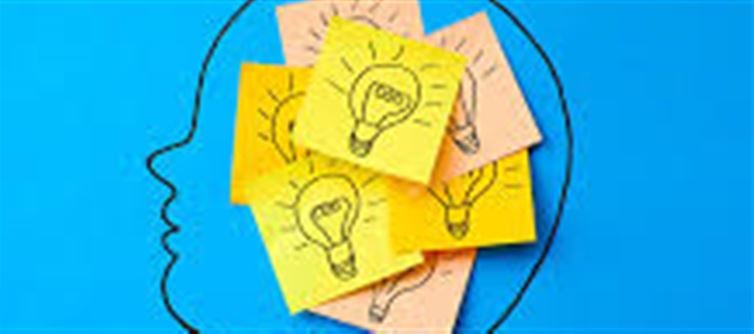
Want to study smarter and retain information longer? Memory techniques can help you achieve just that! By implementing these proven strategies, you can enhance your learning, memory retention, and overall academic performance. Here are 7 effective memory techniques for students:
1. Mind Mapping: Visualizing Information
· What it is: A mind map is a diagram that visually organizes information, helping you to connect ideas and concepts.
· How it works: Start with a central idea and branch out into related topics. The use of colors, symbols, and lines helps the brain retain and recall information better.
· Why it helps: It engages both visual and spatial memory, making complex information easier to understand and remember.
Tip: Use wallet PLATFORM' target='_blank' title='digital-Latest Updates, Photos, Videos are a click away, CLICK NOW'>digital tools like MindMeister or XMind for interactive mind maps.
2. Mnemonics: Creating Memory Triggers
· What it is: Mnemonics are memory aids that simplify information into catchy phrases, words, or acronyms.
· How it works: Use easy-to-remember phrases or acronyms to encode complex data. For example, the phrase "PEMDAS" (Parentheses, Exponents, Multiplication, Division, Addition, Subtraction) helps recall the order of operations in math.
· Why it helps: Mnemonics take advantage of your brain's ability to remember simple patterns, making abstract concepts more memorable.
Example: “ROYGBIV” to remember the colors of the rainbow (Red, Orange, Yellow, Green, Blue, Indigo, Violet).
3. Association Method: Linking New Information with Existing Knowledge
· What it is: The association method involves linking new information with something you already know.
· How it works: Whenever you encounter new data, relate it to something familiar. For example, when learning a new vocabulary word, link its meaning to a similar-sounding word or a real-life object.
· Why it helps: Connecting new information to existing knowledge enhances the brain’s ability to make associations, leading to better recall.
Tip: Use the ‘memory palace’ technique—associate new information with specific locations or objects in a familiar space, like your home.
4. Loci Method: Walking Through a Familiar Place
· What it is: The Loci Method (also known as the Method of Loci) involves visualizing a familiar place and associating it with the information you want to remember.
· How it works: Imagine walking through your home, and mentally place pieces of information in different rooms or objects. When you need to recall the information, simply "walk" through your mind's eye and retrieve it.
· Why it helps: By leveraging spatial memory, this technique improves the organization of information in your mind.
Tip: Start with something small like remembering a list of items by assigning each item to a specific location in your home.
5. Chunking: Breaking Down Complex Information
· What it is: Chunking involves grouping information into smaller, manageable parts to make it easier to remember.
· How it works: For example, instead of memorizing a long string of numbers like “1234567890,” chunk it into “123-456-7890.” This technique works especially well with phone numbers, lists, or long passages of text.
· Why it helps: The human brain can easily retain 5-9 pieces of information at once, so chunking reduces cognitive overload and improves recall.
Tip: Use chunking for dates, long formulas, or vocabulary words.
6. Spaced Repetition: Reviewing Information at Intervals
· What it is: Spaced repetition is a technique that involves reviewing information at increasing intervals to reinforce memory over time.
· How it works: Instead of cramming all at once, break your study sessions into smaller sessions spaced over a few days or weeks. Use apps like Anki or Quizlet to help you schedule reviews.
· Why it helps: Spaced repetition strengthens neural connections and combats the forgetting curve, ensuring long-term retention.
Tip: Schedule flashcard reviews for topics you’re studying and revisit them after increasing intervals (1 day, 3 days, 7 days, etc.).
7. Visualization: Creating Mental Images for Better Recall
· What it is: Visualization involves creating vivid mental images to represent information you're trying to remember.
· How it works: When studying, create detailed, sensory-rich images in your mind that represent concepts or facts. For example, if you're learning about photosynthesis, imagine a tree soaking up sunlight and turning it into energy.
· Why it helps: The brain is wired to remember visual images far better than abstract data, so this technique strengthens memory by linking abstract concepts with clear images.
Tip: Combine visualization with the Loci Method to create a vivid mental map where each location holds an image representing a piece of information.
Conclusion: master Your Memory with These Techniques
By incorporating these memory techniques into your study routine, you can significantly improve your ability to learn and recall information. Whether you use mind maps to organize ideas or spaced repetition to reinforce memory over time, each technique provides unique benefits. Try different methods to see which works best for you, and watch your academic performance soar!
Disclaimer:
The views and opinions expressed in this article are those of the author and do not necessarily reflect the official policy or position of any agency, organization, employer, or company. All information provided is for general informational purposes only. While every effort has been made to ensure accuracy, we make no representations or warranties of any kind, express or implied, about the completeness, reliability, or suitability of the information contained herein. Readers are advised to verify facts and seek professional advice where necessary. Any reliance placed on such information is strictly at the reader’s own risk.
.jpg)




 click and follow Indiaherald WhatsApp channel
click and follow Indiaherald WhatsApp channel